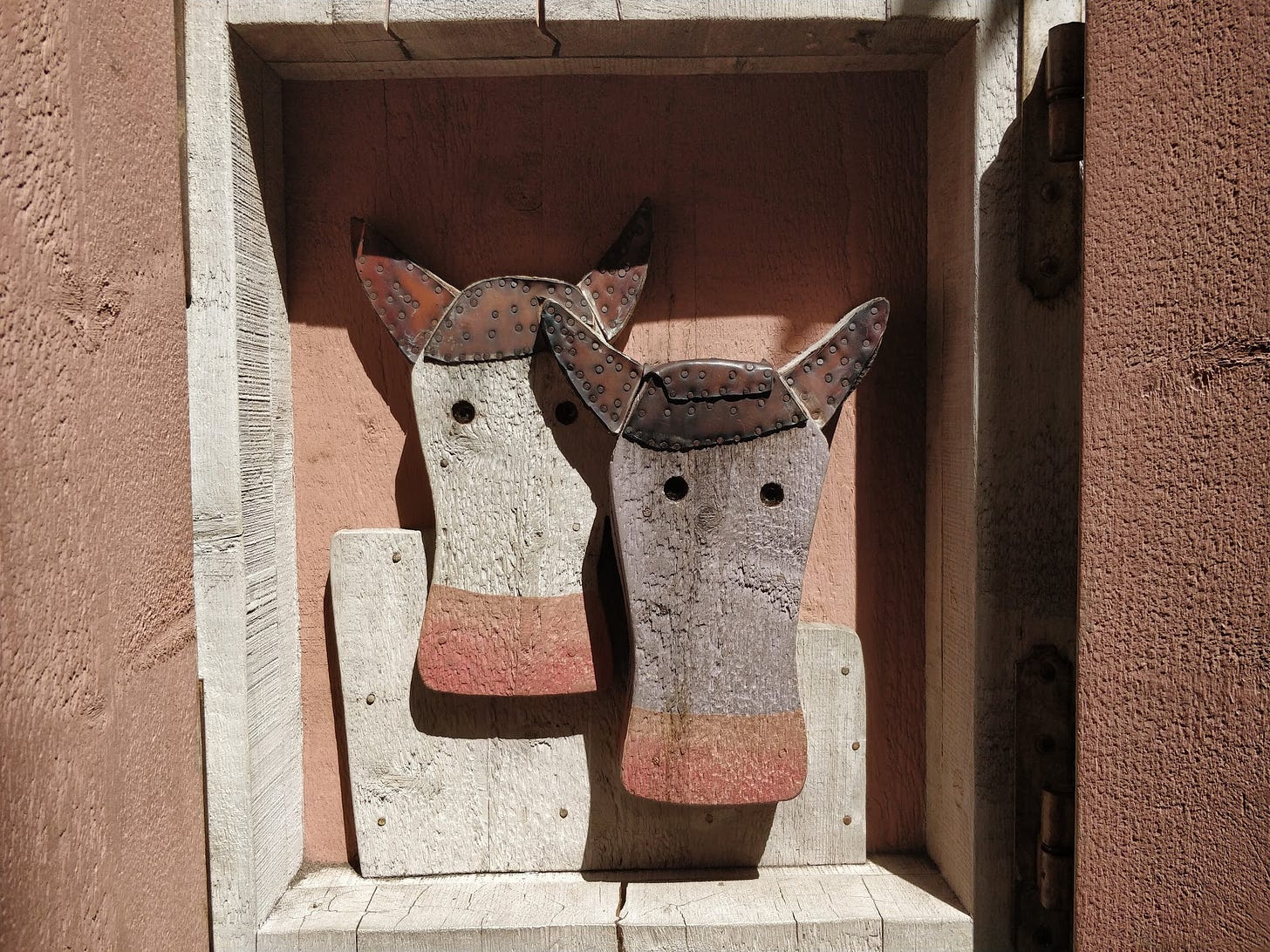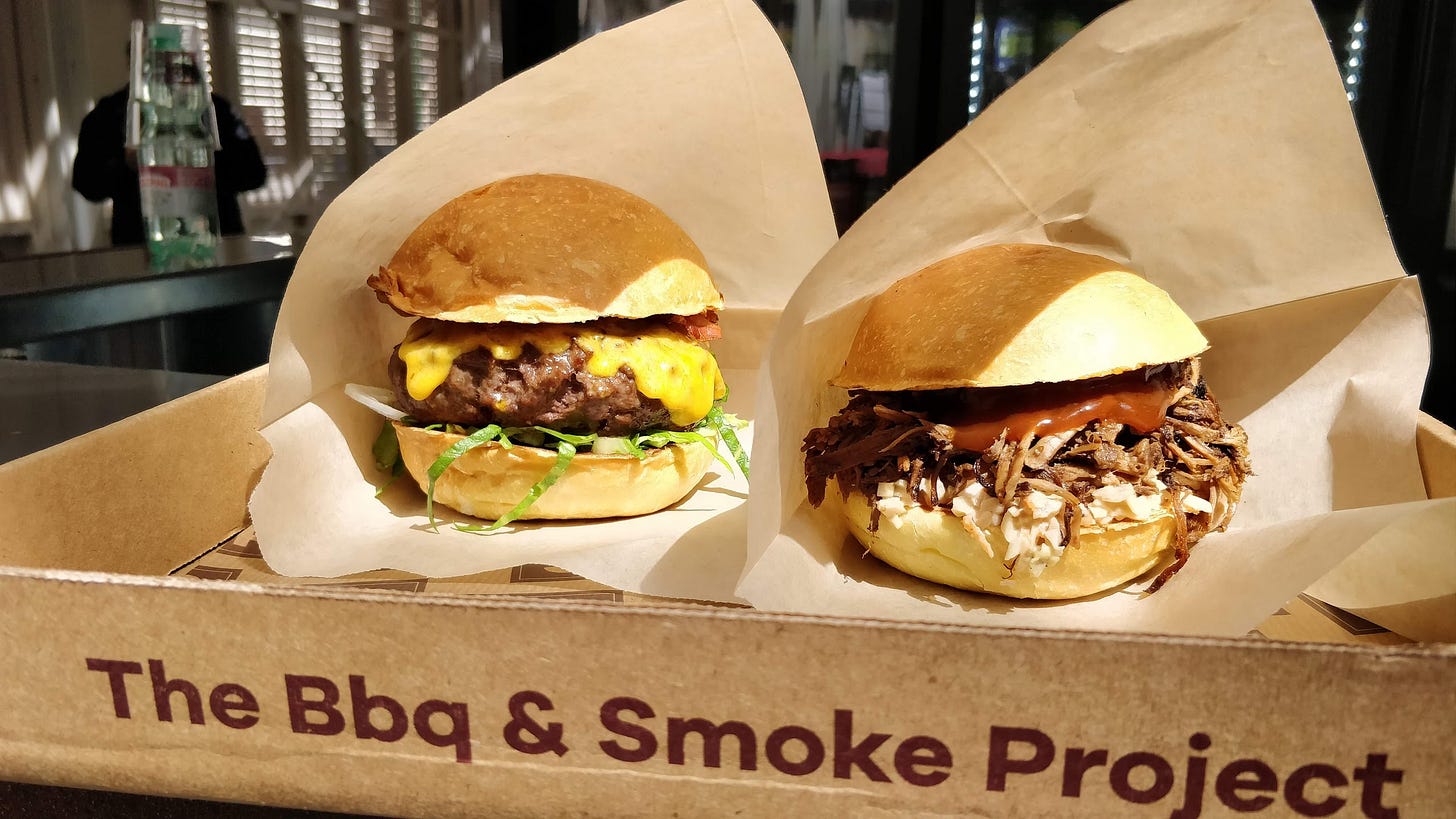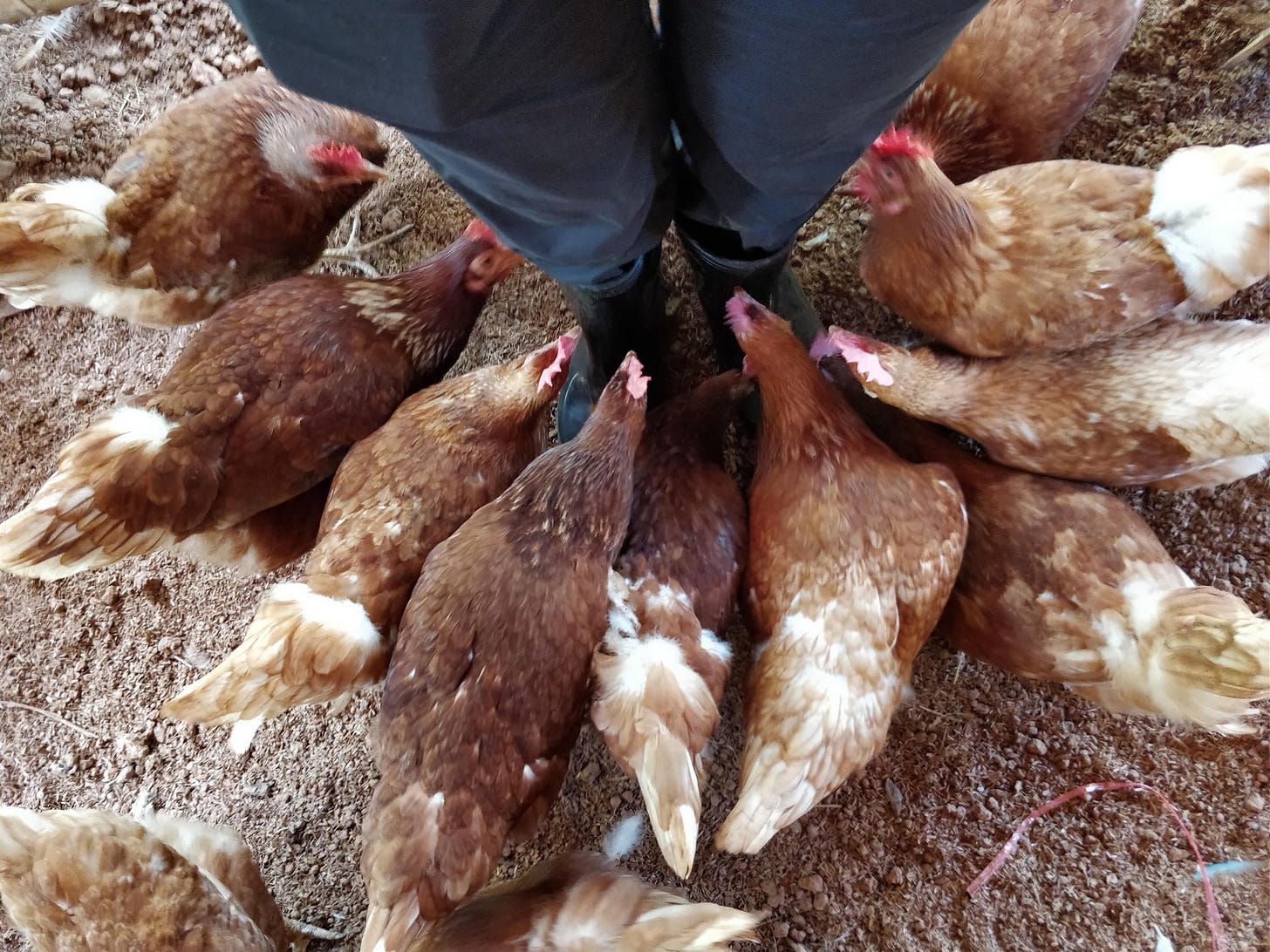Much a do about beef
A newsletter about food systems, climate change and everything connected to them
To burger or not to burger… that is the question
Ok, ok, I’ll lay off the Shakespearean puns. For now. I wasn’t going to touch on this issue as it’s already being covered extensively and I also talked about it in last week’s issue but there are just a lot of different strands around this, so I thought I’d try and put them all in one place. You’re welcome.
I’m sure you’ve seen the outrage over Biden’s supposed plan to ban meat (short answer - no he isn’t, but yes some of us definitely need to reduce our intake) and this piece in Vox is a thorough summary of how the furore came about, including the face-palming comment about ‘plant-based beer’ (is there any other kind?), and the bigger issues around meat consumption and animal agriculture.
Hot on the heels of this debate is the announcement by popular cooking website epicurious that it won’t be publishing any new beef recipes on its website, citing its outsize contribution to livestock’s greenhouse gas (GHG) emissions heating up the planet. They said about 15% of total GHGs come from livestock, of which 61% can be traced back to beef.
“This decision was not made because we hate hamburgers (we don’t!). Instead, our shift is solely about sustainability, about not giving airtime to one of the world’s worst climate offenders. We think of this decision as not anti-beef but rather pro-planet,” said senior editor Maggie Hoffman and former digital director David Tamarkin.
Obviously not everyone supports this move. But what’s really interesting to me was epicurious’ revelation that they actually stopped adding new beef recipes “well over a year ago” and didn’t suffer from drops in traffic or engagement numbers!
I am an irregular follower of epicurious so can’t say I noticed this but did you? What do you think?
This paper, currently only in preprint (meaning it hasn’t been peer-reviewed) suggests the world considers an even more drastic step - a gradual transition over the next 15 years to a plant-only diet.
“Phasing out consumption of animal products, especially those from cattle and buffalo, from the human diet today, could yield a three-decade pause in net accumulation of the greenhouse gasses that drive global warming,” it said.
Now, the authors founded Impossible Foods, a pioneer of plant-based products so there is definitely a major conflict of interest here, and to be fair to them, they don’t deny that, but say they’ve made all of their data and code freely available so others can check their methods and conclusions.
What they are suggesting will sound drastic, but we do need to think of ways to reduce methane from the atmosphere, because it is surging and the gas is way more potent than the better-known carbon dioxide (CO2). The good news is that it is also short-lived, which means the quicker we can cut methane emissions the sooner we can see the climate impacts.
An upcoming United Nations report will talk about just that, according to Reuters.
The report would say “the fossil fuel sector has the biggest potential to slash methane emissions this decade. Fossil fuels account for 35% of human-caused methane emissions, while agriculture contributes 40% and waste such as landfills accounts for 20%, it said.”
The NYT has a more comprehensive piece that looks at all the different aspects of methane, and said, “Releases from livestock, in particular, are expected to make up a growing share of future methane emissions unless there are technological breakthroughs, or the world’s top meat consumers change their diets.”
This is a great, colourful read from former colleague Matthew Green (Reuters) on three young women racing to reduce methane emissions.
My two cents’ worth? Yes, some of the developed nations are eating far too much red meat and they should reduce it, not just for the climate but also for public health.
But meat, both white and red and including eggs, can also be critical for the nutrition of people in developing countries who current do not consume nearly enough protein. Remember, not everyone is blessed with a variety of substitutes either. Sometimes alternatives are just not available. Other times, they are way more expensive.
Full disclosure - I come from a country where 40% of pregnant women and 30% of reproductive age women have iron deficiency anaemia, which can be detrimental to both the mother and the child both during and after pregnancy. In those circumstances, a bit of protein, like eggs, can go a very long way.
Carbon Farming - hit or hype?
The European Commission is planning to launch an EU carbon farming initiative by the end of the year, based on the findings of a two-year study, in order to push “agriculture, forestry, and land management operations across the region to sequester carbon,” reports AgFunder News.
If you’re not sure of what ‘carbon farming’ is, it’s another word for ‘regenerative agriculture’, a set of farming practices that focuses on the health of soil - which stores more carbon than the planet’s atmosphere and vegetation combined - and hence improve its potential to keep carbon in the ground. See my story from 2020 on why it’s important to look after the soil.
Here’s more on the EC’s thinking on carbon farming and the technical handbook that was published on Apr 27 on how to set up and implement it.
Al Gore is a big fan of carbon farming/regenerative agriculture and told me in an interview late last year that his nearly 700-acre Tennessee family farm, which grows vegetables and chestnuts and raises animals, has been able to sequester five times as much carbon as he was able to before adopting this style of farming.
Seems like Biden has heard of this potential. In his remarks to a Joint Session of Congress on Apr 28, Biden said, “when I think about climate change, I think jobs,” including, “Farmers planting cover crops, so they can reduce carbon dioxide in the air and get paid for doing it.”
Not everyone is buying it though. In this piece for WIRED back in January (ahhhh… a long time ago), Robert Paarlberg, a longtime food and agriculture expert and associate in the Sustainability Science Program at the Harvard Kennedy School, implored Biden not to get into carbon farming, saying it is “a sweetheart deal for Big Ag”.
The World Resources Institute has also poured cold water on regenerative agriculture’s carbon potential, saying, “Our view is that the practices grouped as regenerative agriculture can improve soil health and yield some valuable environmental benefits, but are unlikely to achieve large-scale emissions reductions.”
In the developing world, however, farmer groups and human rights activists have been promoting “agroecology” a way of farming that is friendly towards ecosystems, including improving soil health and biodiversity. But there are fears too that it is being co-opted by Big Ag, as this comprehensive article in Civil Eats shows.
Rice in the desert?
This tweet from ICBA (International Center for Biosaline Agriculture) caught my eye, partly because I’m such a rice-phile (is there such a word?) but also because I find the whole idea of using marginal lands to grow food fascinating.


Marginal lands are lands where poor soil and scarce freshwater make farming extremely challenging. Globally, around 1.7 billion people - or 1 in 5 people - live in marginal environments but that number could surge if temperatures rise further and cause water shortages.
Dubai, where ICBA is based, definitely counts as marginal lands in terms of farming because of its punishing heat and salt-tainted earth. Those conditions also make it an ideal testing ground. I’ll be interested in finding out whether the harvest meets - or miss - the expectations.
You can read more about ICBA and what they do in this piece I wrote about ICBA’s former head, Ismahane Elouafi, a Moroccan scientist who narrowly missed being a fighter pilot. Ismahane is now the Chief Scientist at the FAO, the U.N. food and agri agency.
Recapturing traditional flavors
Two recent articles about chefs and cookbook authors’ attempt to safeguard old recipes is proof - to me at least - of the transcendental nature of food and how important it is to our cultures and heritage.
The first piece, in NYT, features Rotanak Ros, who was born six years after the fall of Khmer Rouge which not only killed at least 1.7 million people but also wrecked Cambodia’s cultural institutions, including its culinary traditions. Her self-published cookbook is “part historical record, part how-to for cooks”, NYT said.
The second one, in WaPo, weaves the efforts of Irina Georgescu to record the recipes she grew up with in Romania before they are lost, and the writer’s own link to the region through her husband’s family. The potato moussaka recipe looks pretty damn fine too.
If you’re thinking of getting a copy of Ros’ cookbook, I recommend pairing it with “From Spiders to Water Lilies”, a beautiful tome with recipes from Romdeng, one of my favourite Cambodian restaurants in Phnom Penh. It’s published by Friends International which does great work with vulnerable children in Southeast Asia. Before you ask, yes, I tried their fried tarantula many moons ago. It was crispy and hairy.
Trees and disease linkages
This came out a month ago but it’s intriguing so I’m including it in this week’s issue. A study by researchers in France and Thailand, published in Frontiers in Veterinary Science, found deforestation, certain types of reforestation and commercial palm plantations correlate with increasing outbreaks of infectious disease.
“They found a strong association between deforestation and epidemics (such as malaria and Ebola) in tropical countries like Brazil, Peru, Bolivia, the Democratic Republic of Congo, Cameroon, Indonesia, Myanmar and Malaysia. In contrast, temperate regions like the USA, China and Europe showed clear links between afforestation activities and vector-borne diseases like Lyme disease,” said a shorter and easier-to-read write-up about the study.
“Their approach did not distinguish between different types of reforestation activities, but they did find a significant increase in disease outbreaks in countries with expanding palm oil plantations. This was especially striking in regions of China and Thailand, where there was relatively little deforestation.”
Just FYI - palm oil is a globally traded agricultural commodity and widely used in a lot of food products, from chocolate to margarine.
Great food photography
Ending on a brighter note - do check out these amazing photos from winners of the Pink Lady Food Photographer of the Year. Made me hanker after a bowl of steaming pho.
As always, have a great weekend! Please feel free to share this post and send tips and thoughts on twitter @thinink, to my LinkedIn page or via e-mail thin@thin-ink.net.






